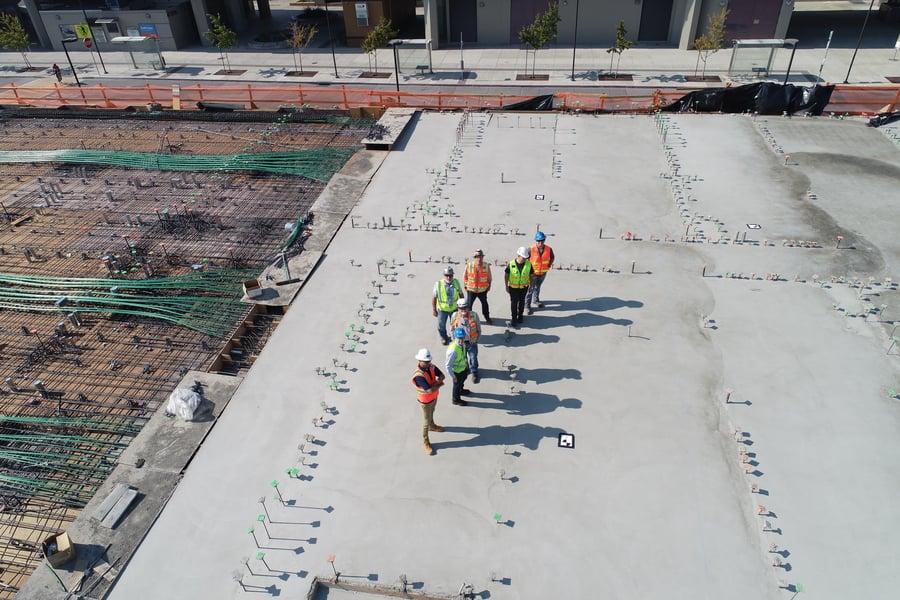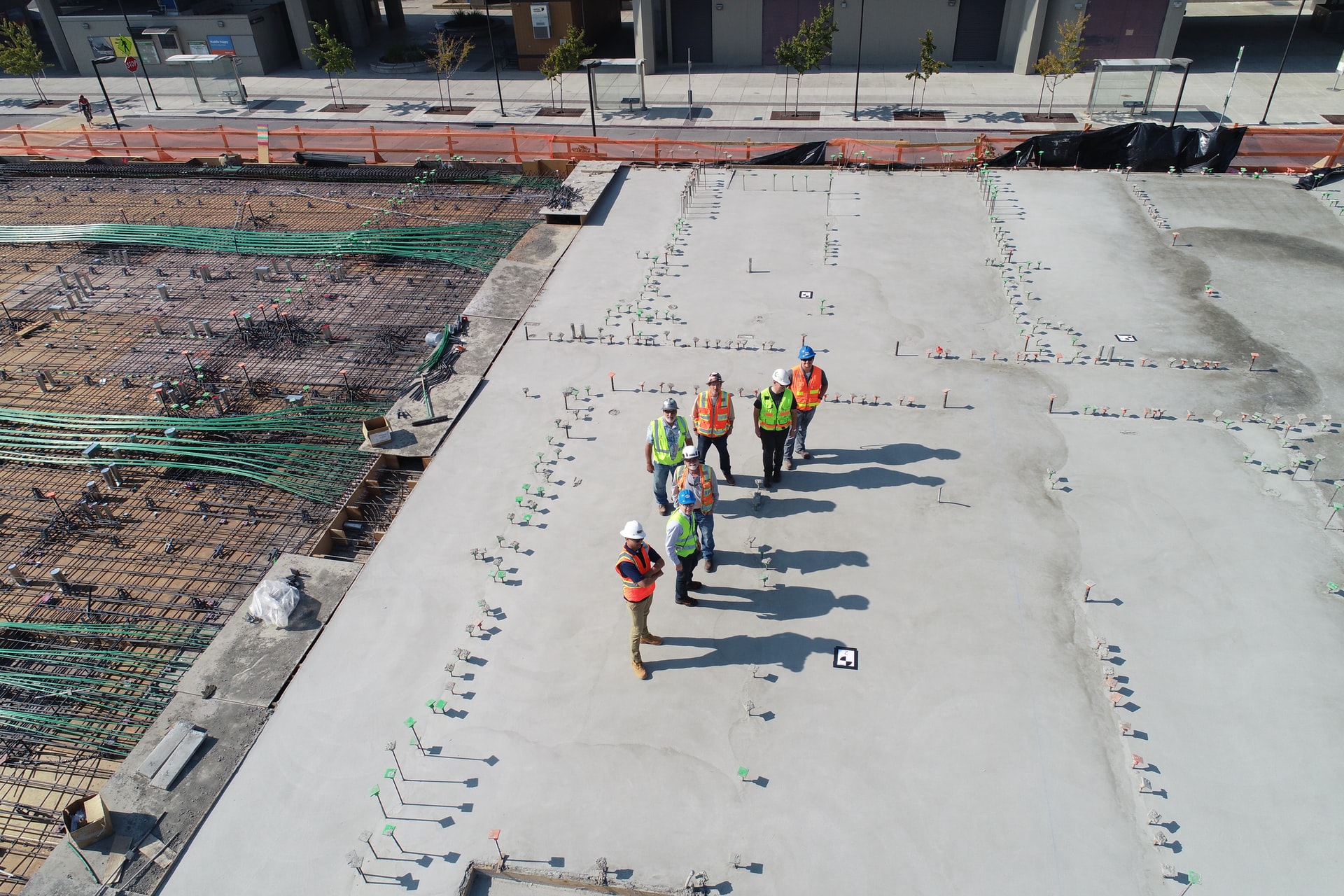
You may not immediately associate concrete batching with creating a recipe for a cake or a pie, but hang with us for a moment and it’ll make sense. In the conception of a recipe, the accurate measurement and timely introduction of component ingredients like flour or water baking soda is key to a final product that is both visually appealing and delicious.
How this applies to concrete batching is as simple as pie, really.
Just like a successful recipe, concrete batching requires high degrees of precision and specification when introducing various liquid elements to the mix, be it water, admixtures, or other chemical solutions. This means the right proportions of additives at the right time in the batching process weighs heavily on the quality and durability of the final batch product, and today’s concrete batch plants need the right dosing processes and equipment to successfully scale production sequences based on customer demand.
With this in mind, let’s examine a handful of the most common dispenser systems used by today’s concrete batch plants to facilitate accurate dosing as well as why accurate dosing processes are important in quality concrete batching.
Common types of admixture dispensers
The end product is often only as good as the tools used to create it. This is certainly true when it comes to concrete batching and achieving an accurate dosing framework, so before we look at the core reasons why accurate dosing is of the utmost importance for effective concrete batching, let’s briefly identify and examine four of the most common admixture dispensers to better understand how and why they are critical players in achieving an accurate dosing process.
- Metering pump dispensers: Used for volumetric batching, metering pump dispensers are ideal for Volumetric Mixer Plants where small amounts of admixture need to be integrated on a continuous, controlled basis. Whereas in a batch mixer all ingredients are charged into the mixer in a predefined sequence, volumetric concrete batching requires constant, consistent entry and exit of liquid with a high degree of accuracy and efficiency.
- Direct feed dispensers: Designed and engineered for high doses of admixture in larger concrete batching operations, direct feed dispensers are ideal for additives like accelerators, corrosion inhibitors, and plasticizers, as well as the addition of job site admixtures. Direct feed dispensers provide accurate, reliable dosing directly into the concrete, and the option of manual, semi-automatic, or computer interface provides versatility and flexibility for the operator in control and insight into the mixing process.
- Bottle or measuring unit dispensers: Also engineered for manual, semi-automatic, and interface control and operation, bottle dispensers are best when visual verification of admixture addition is required for effective and efficient batching processes. This system is designed for such admixtures as air entraining, water reducer, or retarder admixtures to help reduce the segregation of admixture, slow settling time, and enhance the overall workability of the concrete.
- Truck-mounted concrete dispenser: Operating on a just-in-time principle, truck-mounted concrete dispensers are best suited for admixture dispensing where concrete is required on an intermittent basis. Admixture dosage is conducted upon arrival at the job site. Mixing and blending of concrete takes place on a continuous basis and the operator can stop the mixing and delivery process and restart it at any time depending on the job or requirements of the application.
As with so much of today’s concrete production landscape, it’s important to remember that there is no one-size-fits all hat for any given problem or challenge. Each production environment has its own set of unique challenges and opportunities, and each concrete batch plant will have a specific set of needs that must be accounted for when considering accurate dosing equipment and process. However, a firm understanding of these most common dispenser systems provides a sound foundation on which you can build an accurate dosing strategy.
Why accurate dosing is important for concrete plants
Now that we have a good understanding of how concrete batch plants facilitate dosing, we can get down to brass tacks and look at why accurate dosing is such a mission-critical task. What’s important to remember is a quality batch job is like a Jenga tower where the integrity of the tower depends on the careful arrangement of each Jenga piece. The same is true here with each reason for why concrete dosing is important: each one is in some way connected to the other and they all must be present for a quality batch.
Increased workability of the final product: Workability in concrete batching is admittedly a broad term that describes how easily freshly mixed concrete can be placed, consolidated, and finished with minimal process disruption or downtime. Workability directly impacts the strength, quality, and appearance of the final product, and accurate, timely dosing is key for high degrees of workability.
Accelerating or slowing the initial set time: Think of the initial set time for concrete batching like the resting time for a steak. Once the steak is pulled off the grill, it’s important to let it rest for several minutes to ensure a tender, moist cut of meat. The same principle applies with initial set time which is the time required for the freshly mixed concrete to reach a defined consistency or when the paste begins to lose its elasticity. Dosing of water, admixtures, or other solutions can increase or decrease this initial set time based on the requirements of the job or the timeframe in which concrete needs to be applied.
Reduced segregation in initial and final setting: Segregation, which can happen either during the initial or final setting, is the separation of the component elements of a concrete mix that can negatively impact the quality and durability of the final product. In addition, severe instances of segregation can result in cavities on the concrete surface which are both unappealing to the eye and a sign of compromised structural integrity. Reducing the water content of a concrete batch and introducing air-entertaining admixtures at appropriate levels based on the scale of the job can significantly reduce the likelihood of segregation.
Nailing the ideal slump rate: Very much connected to the overall workability of a concrete mix, slump rate is a key indicator of the amount of liquid in a concrete mix and how that level fluid impacts the overall flow and workability of the freshly mixed concrete. Very dry mixes usually have a slump rate of 0 to 25 mm while medium mixes have a slump rate of 50 to 90 and high mixes clock in with a slump rate of >100 mm. Certain applications have an ideal slump rate for best use, and accurate dosing is a key component in achieving the ideal slump rate for maximum workability.
Increased durability in extreme conditions: Obvious as though it may seem, it’s important to remember how many concrete applications exist in extreme weather conditions. Severe cold, heat, wear and tear, and chemicals such as deicers used on roads are enemies of concrete durability and longevity, and accurate dosing to ensure a workable final product with reduced segregation and optimal slump rate is important in enhancing durability and achieving a robust ROI.
Compliance with DOT regulations: Regulatory compliance in any sector of the industrial space is key and this is certainly true in the concrete industry where state and federal Department of Transportation offices have strict guidelines as to the durability of concrete and the proportions of admixtures or chemicals used in concrete batching relative to the environmental impact of said batching processes. The variant-rich nature of the regulations only enhances the importance of dosing practices particularly for batch plants that work across state lines or in a multitude of different municipalities.
IPEC provides today’s concrete batch plants with durable, field-proven metering solutions from industry-leaders such as Badger Meter, Yamada, Milton Roy, LMI, and more and. Our process automation experts can help create a customized solution based on the size, scope, or scale of your batching needs, and our service team has the industry experience you need to service and/or repair your products to reduce replacement costs, help ensure minimal downtime, and optimize your batching process.
Learn more about how IPEC can help you achieve unparalleled accuracy and efficiency with your concrete batching processes.

